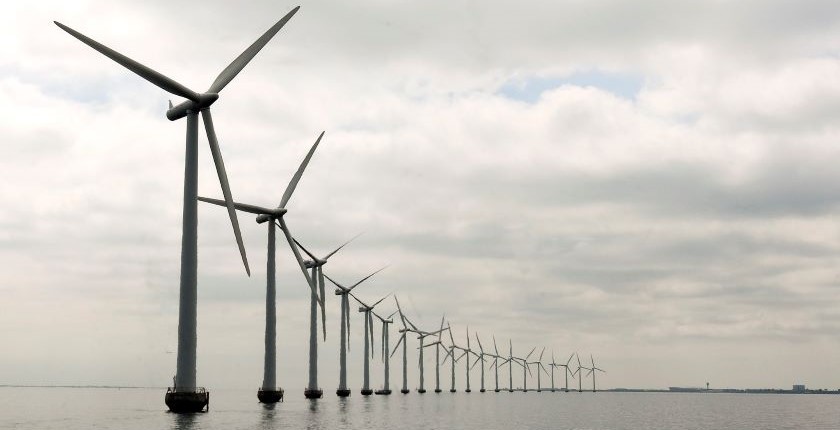
Photo: United Nations Photo / https://creativecommons.org/licenses/by-nc-nd/2.0/
The heads of government and energy ministers of eight countries bordering the Baltic Sea have pledged to increase the capacity of offshore wind farms seven times, to nearly 20 gigawatts (GW) by the end of the decade. At a summit in Copenhagen, the Baltic countries signed a declaration on the development of offshore wind and on greater cooperation in the energy sector.
The Baltic Sea has enormous potential for the development of offshore wind farms, but currently has only 2.8 GW of installed capacity. Eight countries pledged at the Copenhagen summit to increase the capacity to 19.6 GW by 2030, which would be enough to supply electricity to 20 million households, officials said.
Eight countries pledged to increase the Baltic offshore wind capacity to 19.6 GW by 2030
Estonia, Latvia, Lithuania, Finland, Sweden, Germany, Denmark, and Poland have also announced plans to consider further targets to be developed at a later stage by 2040.
High potentials in the Baltic
Germany and Denmark are the only Baltic countries to have large wind farms in the Baltic Sea and are determined to increase their capacity. Other countries intend to follow suit, according to a statement from WindEurope.
Poland intends to install 6 GW of offshore wind by the end of the decade, and 11 GW by 2040. Finland plans to connect its first large wind farm to the grid by 2026-2027 and the second by 2028.
In Sweden, 15 GW of projects are currently applying for permits, part of which would be plugged in before 2030. Estonia, Latvia, and Lithuania also have the ambition to build their first offshore wind farms before 2030.
Wind energy capacity in the Baltic Sea has the potential to reach 93 GW by 2050, according to conclusions from the summit.
Alternative to Russian gas
A large part of the Baltic region was until recently dependent on Russian energy imports, and alternative energy sources are now being sought. Installing more offshore wind will accelerate the phase-out of Russian fuel and increase the energy security of the region, WindEurope notes.
Officials from all countries bordering the Baltic Sea, except Russia, attended the meeting
The eight Baltic countries explicitly stated this in joint declarations, which were signed at the prime ministerial level, as well as at the level of energy ministers. Officials from all countries around the Baltic Sea, except Russia, attended the meeting.
Streamlining bureaucratic procedures
State officials also agreed that licensing procedures need to be sped up, since long bureaucratic processes are slowing the implementation of projects.
The ambitions stated in the declaration will only be delivered if the rules and procedures for issuing permits are simplified. It is also necessary to build a strong European supply chain.
The development of offshore wind turbines requires huge investments in offshore network infrastructure, ports, and ships. Cross-border co-operation will also be of paramount importance.
Germany and Denmark have already proven that cross-border offshore projects are possible, with their Kriegers Flak project. Denmark has ambitions to connect more of its offshore wind farms in the Baltic Sea to the German grid.
Cross-border hybrid projects should also ensure greater energy security by improving the flow of electricity, which will also help reduce costs. This applies in particular to countries that are not well connected to the rest of the European network.
Wind industry for climate goals
To reach the ambitions for a climate-neutral Europe by 2050, the EU’s offshore wind power capacity should rise from 15 GW today to 300 GW by the middle of the century.
“The Baltic Sea will be a key part of Europe’s build-out of offshore wind. Today’s summit brings important new commitments from the 8 Baltic Governments. And it’s good they recognize the key role of cross-border collaboration. That’ll be essential, especially on grid development and maritime spatial planning,” said WindEurope CEO Giles Dickson.
WindEurope: declaration will be essential, especially on grid development and maritime spatial planning
Earlier this year, Germany, Denmark, the Netherlands, and Belgium announced a tenfold increase in North Sea wind capacity, to 150 GW by 2050.
In the same period, the onshore wind capacity in EU countries should rise from 173 GW to 1,000 GW to contribute to climate goals.
The European wind industry will continue to ensure the expansion of offshore and onshore wind goes hand in hand with the protection of biodiversity and in dialogue with local communities and other stakeholders, WindEurope notes.


















Be the first one to comment on this article.